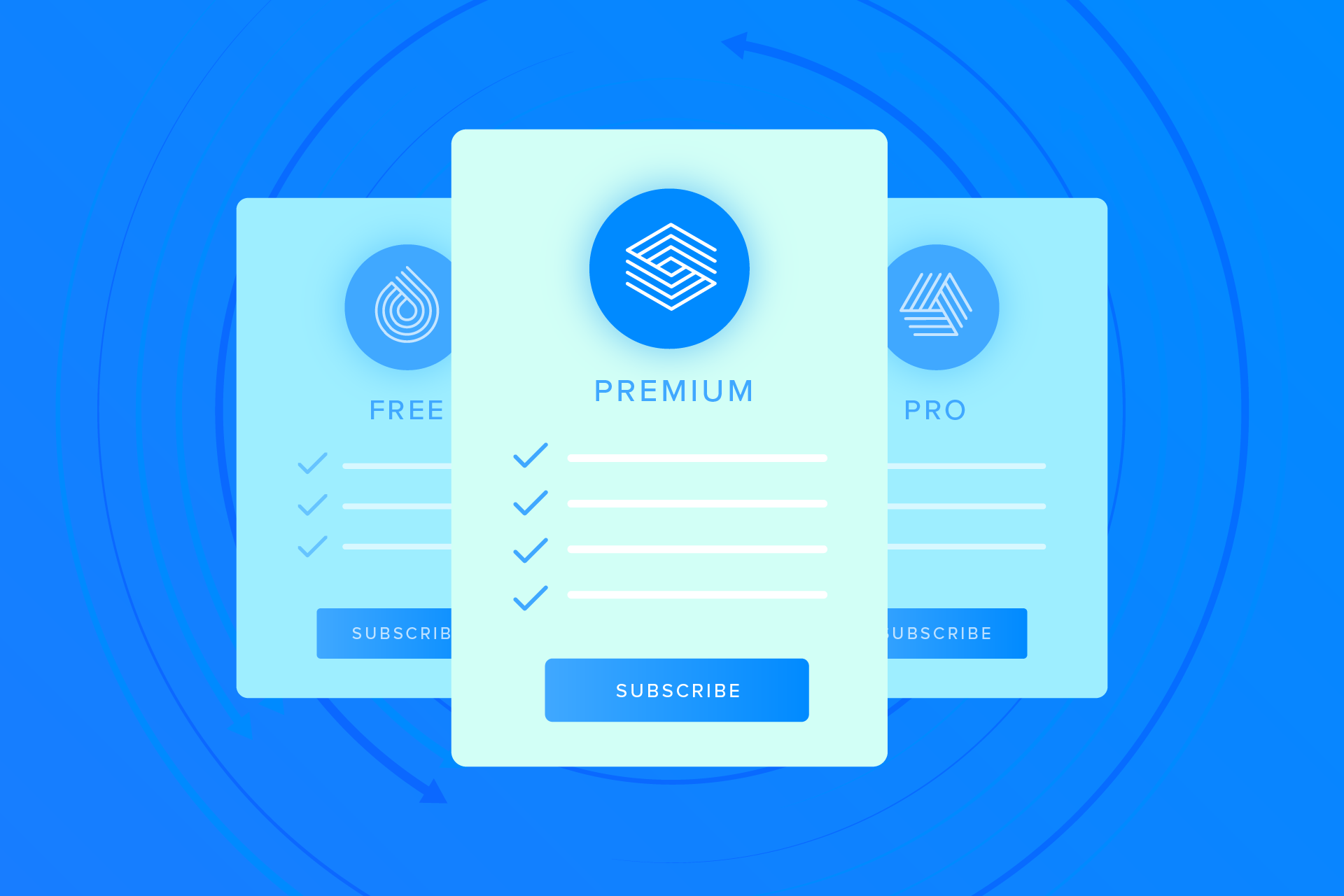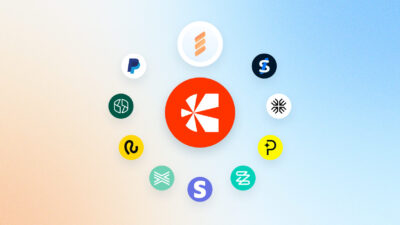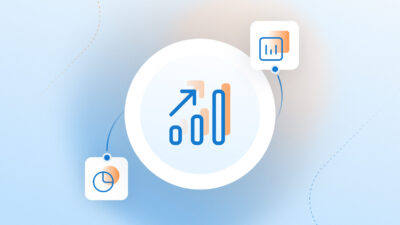The way we purchase products is changing—and so are our business models.
More and more, customers are looking for ways to streamline their purchases and make transactions easier. When it comes to software and online purchases, those transactions are increasingly moving to a subscription-based model, where customers put their purchases on autopilot so they can have continuous access to SaaS products.
The subscription-based model has become so popular that Salesforce predicts every new software company will now offer subscriptions. Even more telling is that 80% of legacy software vendors will have shifted their business models so they can provide customers with a subscription service, too.
The best part? Subscription services are what customers want. 15% of people who shop online now pay for at least one subscription and nearly 90% of businesses are looking for ways to adapt their online payment platforms so they can handle recurring subscription payments.
In this comprehensive guide, we’re going to take a deep dive into:
- What is subscription revenue?
- What are the advantages of using subscriptions as a revenue model?
- How to move to a subscription revenue model
- How to get your subscription pricing right
- How to calculate your subscription revenue
Ready? Let’s get selling.
What is subscription revenue?
Subscription revenue is where a customer will sign-up to get access to a product or service continuously and is charged the same amount either monthly or annually.
A subscription business model focuses on retaining customers for a long time rather than just hoping to sell them a singular product or service. This creates recurring revenue, where customers are paying the same amount every month and allows a company to create a more consistent, predictable cash-flow.
The most famous example of this type of service right now is Netflix. A customer pays a monthly subscription fee (starting at around $8), and in return, they’ll get unlimited access to the 36,000 hours of movies, tv shows, and documentaries on the streaming service.
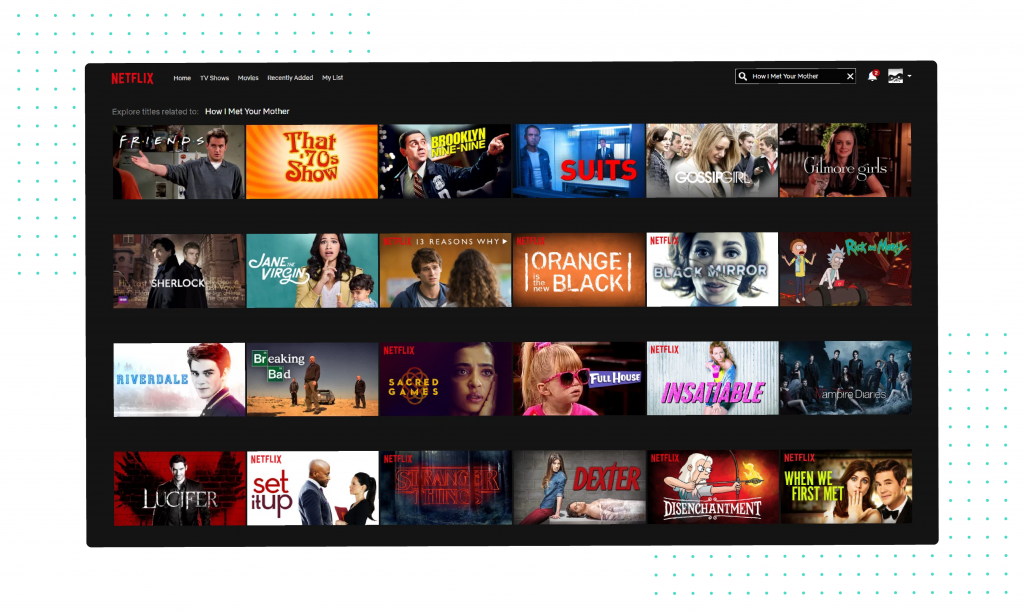
A small chunk of the content available thanks to a Netflix subscription
With the Netflix example, it’s easy to see why subscription services are becoming popular with online stores and software as a service (SaaS) companies. A lot of the software and digital products we use online, we use continuously. A lot of companies are chatting in Slack, handling sales and marketing efforts in a CRM, and using a payment processor to handle purchases. Each of these products is used continuously, so having 24/7 access to them and paying from them through a subscription-based service makes sense.
Zuora’s CEO Tien Tzuo says although the price of a subscription doesn’t bring in the revenue that a one-off purchase does, retaining the customer and getting recurring revenue through a subscription wins out in the long run. He calls this transformation the “fish model.” Initially, costs go up and revenue drops after bringing a new subscription-based customer on board. However, after the initial costs of acquiring the customer have been recouped, costs go down, and revenue comes back up.

Source: Technology-as-a-Service Playbook: How to Grow a Profitable Subscription Business, 2016, Technology & Services Industry Association (TSIA)
Then, as the customer is on a subscription cycle, the billing and transaction that takes place every month can be automated as it’ll be the exact same amount.
“If you’re not shifting to this business model now, chances are that in a few years you might not have any business left to shift,” Tzuo says.
“The reality is ownership is dead; now it’s really about access as the new imperative.”
What are the advantages of using subscriptions as a revenue model?
1. It Creates a Recurring Payment Cycle
Traditional business models are set up on the notion that customers will make singular purchases, a subscription model brings in constant, consistent revenue.
Compared to singular purchases, subscriptions mean recurring payments are made to your business (albeit smaller in value.) The plus side of this is that not only is each transaction is smaller and more affordable for the customer, but your cash flow will be constant and consistent.
Subscription revenue streams often fall into two categories: month-to-month plans that you can cancel at any time, or subscriptions based on contracts. An example of the former subscription plan is a tool like Spotify or Amazon Prime, where you pay a set amount every month to access their services, and you can cancel whenever you want. A contract-based subscription is where you’ll pay a monthly or annual fee, but you’re locked into a term contract. You’ll see these kinds of subscriptions used by companies like cell phone providers, where at the end of the contract your cell phone is yours to keep.
Recurring revenue is also good for the value and prosperity of your business. As Venture Capitalist Jeff Bussgang explained to TechRadar, professional investors prefer companies that bring in predictive amounts of revenue.
“When you have a recurring revenue business model, you rarely miss your monthly or quarterly numbers by more than 10-20%,” he says.
“Your forecasting process is much more accurate. At the beginning of the quarter, you start with a base to grow from rather than begin at zero.”
2. It’s Easier to Scale
When your business is starting out, a traditional business model is easier when it comes to invoicing.
It goes like this: your customer buys an item, you distribute the item, and then you invoice the customer for that item. The problem with traditional business models and the way these invoices work is when your company grows and begins to scale. If you are constantly tied up handling individual invoices and sales, it requires more effort, especially if you haven’t got the right billing system in place. These issues compound if your business deals with physical products, as you’ll constantly be dealing with factors like shipping costs, buyer location, and any customs or import laws (for international deliveries).
With a subscription revenue model (and the right tools), this entire process can be automated. A subscription model can streamline the entire post-checkout fulfillment process for every online purchase through your website. For example, customers can download content and digital downloads automatically if a website is integrated with FastSpring. The customer can then choose how to pay for it depending on their circumstances.
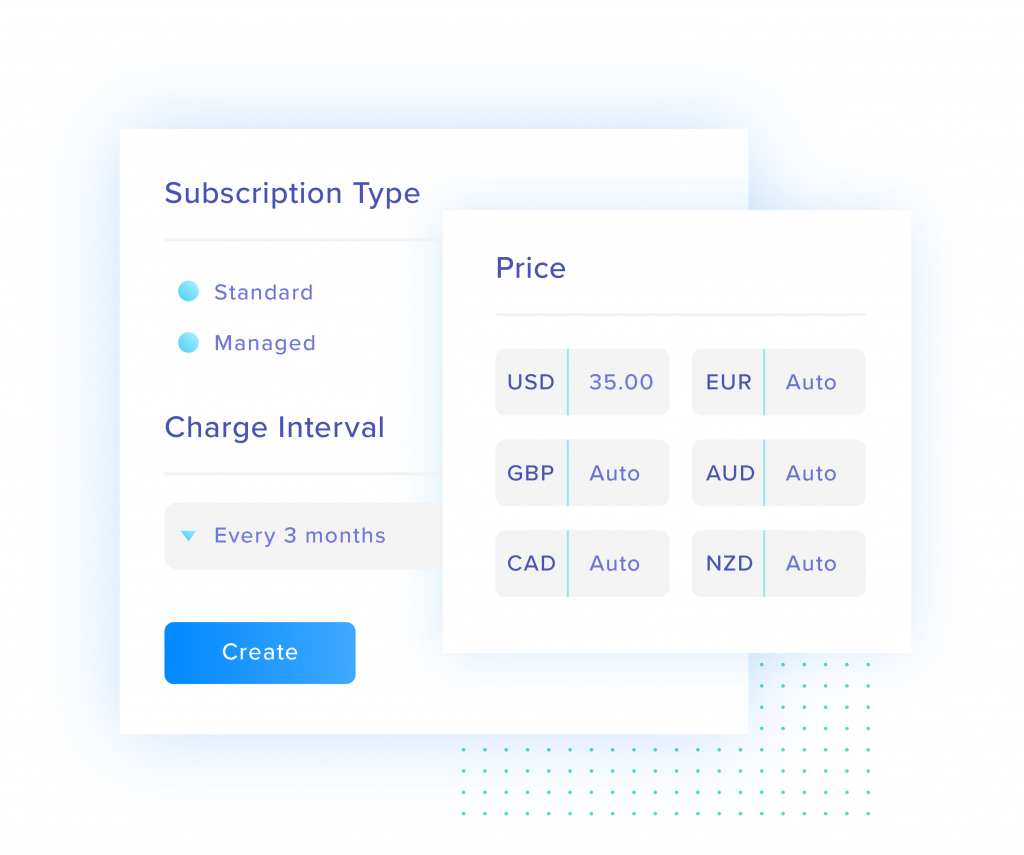
If a customer wants to pay for the service or product monthly, they can, or if they want to split payment across multiple months, FastSpring can take care of that too. The difference here is the platform will take care of all the invoicing and payment processing, fraud protection, and tax management automatically so you can spend more time growing your business.
3. Better Customer Relationships
Did you know that a whopping 67% of customer churn is actually preventable?
Yup—companies could retain ⅔ of their paying customers by improving their customer support and the way they handle customer complaints. To keep customers on board, companies are turning to subscription-based relationships. A CitiBank study found 76% of businesses now look at subscription-based business models as a way to improve their customer retention and long term customer relationships.

The reason why subscription-based business models can help you keep customers around? Data.
As the CitiBank study explains, once a customer enters into a subscription-based relationship with your company, you can then start to gather regular usage data from them and get to know them better. The more you know about your customer, the more in tune with their needs you’ll be. It’ll then be easier for your sales reps to find ways to cross-sell and upsell products to them as well as using that same data to understand and serve your customers.
If they aren’t happy, you’ll know about it sooner and try and fix whatever problems they have before they opt-out of their subscription.
How to Move to a Subscription Revenue Model
Deciding to move to a subscription revenue model takes planning.
It’s not just your stakeholders you have to think about. You need to consider your existing customers, your investors (if you have any), and your staff. Each of these will play a role in how you transition to a subscription-based model of doing business, and whether you need to adjust your product offering or pricing models.
Before you can make the jump to a subscription-based model, you need to know if your product or service will fit into what’s required to make it work. If you are selling physical products, the transition requires extra research as you’ll need to make sure:
- Your product fits into a subscription model (hint: if you sell televisions, you might not fall into the category!)
- Your products can be placed into average pricing tiers, as you’ll be charging your customers the same price every month
- You have a reliable way to deliver your subscriptions on the same day, every week or month
- You have a way to track billing, customer success, and customer service for your physical subscriptions each month
If you’re able to get all this right, you’ll be on track to a successful subscription model like many other companies have found. In a 2018 McKinsey study, Dollar Shave Club (who sell subscription packs of personal grooming products) was the second most popular subscription service among a study of over 5000 people, only beaten by Amazon’s Subscribe & Save.
Making the switch to a subscription-based service if you’re selling a SaaS product or offering digital downloads, however, is a little bit easier. Chances are, you already have customers who you’re selling products to through a traditional business model. Instead of making a sudden switch to a subscription model, you should run both models side by side to make the transition easier for existing customers.
Gartner’s Christy Pettey suggests moving new customers onto a subscription-based service first, and then focus on moving contract-based existing customers across. Pettey also suggests making an effort to improve the value of your product during this time. If your company sells software, for example, Pettey suggests:
- Opting for cloud/hosted subscription/SaaS products that are more flexible than traditional products
- Leveraging the analytics of your end-users to learn more about your customer base
- Building and integrating new features into your subscription plans so you can justify higher prices and encourage customer growth
Gartner Research Director Laurie Wurster also suggests adding a free trial to your products and software to improve their value.
“Subscriptions provide better entry-level pricing and the ability to add features as customers mature and gain value from the initial experience,” he says.
“This is especially critical for new entrants who want to lower financial barriers to new technology adoption and create sustainable, recurring revenue streams.”
Pro Tip: We’ve put together a list of 4 ways you can test the strength of your subscription plan after you’ve made the switch. Check it out here.
How to Get Your Subscription Pricing Right
One of the most difficult parts about moving to a subscription-based business model is figuring out—what should we charge?
Here are four steps to getting your subscription pricing right.
1. Offer More Than One Subscription Plan
Not only are options good for your customers—they’re good for your business.
By offering more than one subscription plan, you can cater to those on a smaller budget as well as customers who can afford more options and even Enterprise companies. The question then becomes, how many plans should you offer, and how much should they cost?
The answer comes down to your product and your customers. Instead of trying to benchmark plans against legacy competitors (which experts warn is the wrong way to go), look at what your customers want. If you know customers are willing to pay $20/month for the bare basics of your software, offer that as a “starter” package, and then you can charge more for other plans with more features. Zapier does this by breaking down packages into Starter, Professional, Team, and Company (as well as a very limited freebie option):
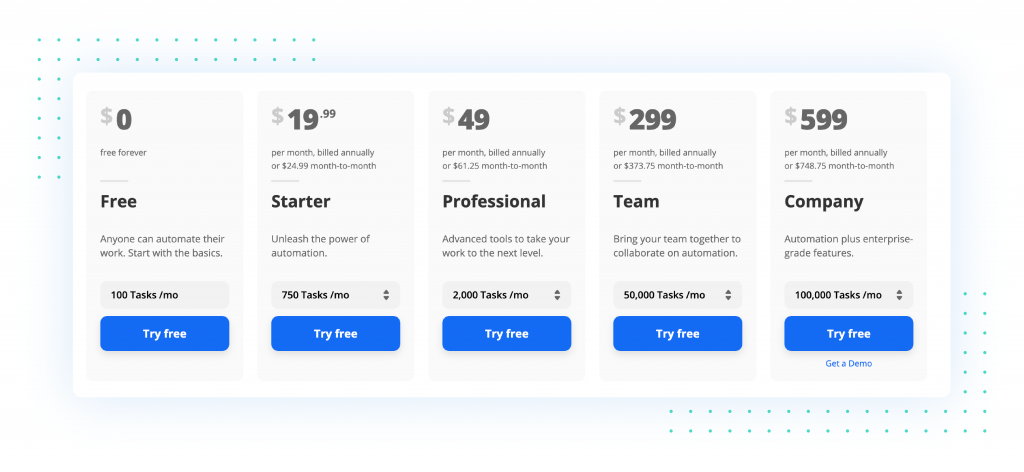
Under each plan is a detailed breakdown of what each one includes. If a customer wants more features, all they have to do is move up to the next plan on the pricing tier:
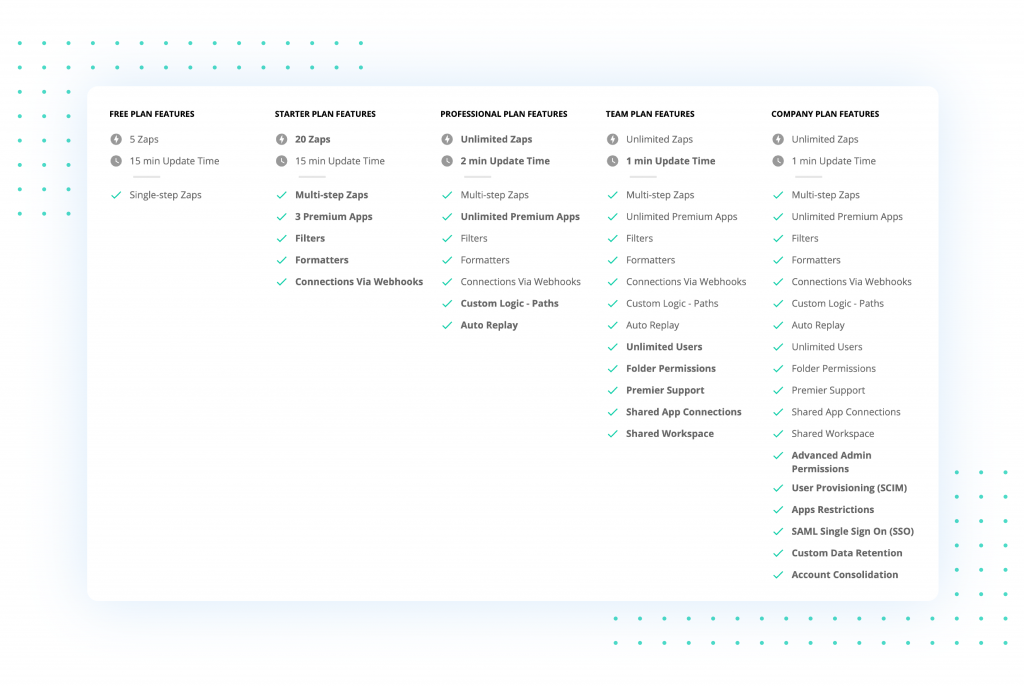
The great thing about pricing your subscription product or service like this is that it makes your product accessible to pretty much anybody, no matter what their budget.
2. Avoid Hidden Charges
Did you know that 56% of customers will abandon their carts if they’re hit with unexpected costs during their buying journey?
Charging customers additional processing, onboarding or administration fees can be one of the quickest ways to lose them. To avoid this, be honest and upfront with your customers about what each plan includes and put it in writing on your pricing page.
Not only will this help build trust with your customer base, but it’ll also help your customer service team out. As your customer knows exactly what they’ll be getting charged for their subscription, there will be less chance they’ll be contacting you about an unexpected charge or fee.
Setting clear expectations about your pricing from the start isn’t just good business, it’s common sense.
3. Offer a Free Trial or a Freemium Product Option
Free trials and even freemium products are the perfect way to show potential customers how valuable your product or service is.
On the surface, offering up a freebie seems like you’re giving away something for, well… free. Don’t think this. At the very least, a free trial shows customers the minimum they’ll get if they subscribe to your service. Dropbox, for example, markets free trials for its business subscription product by letting potential customers choose between plans:
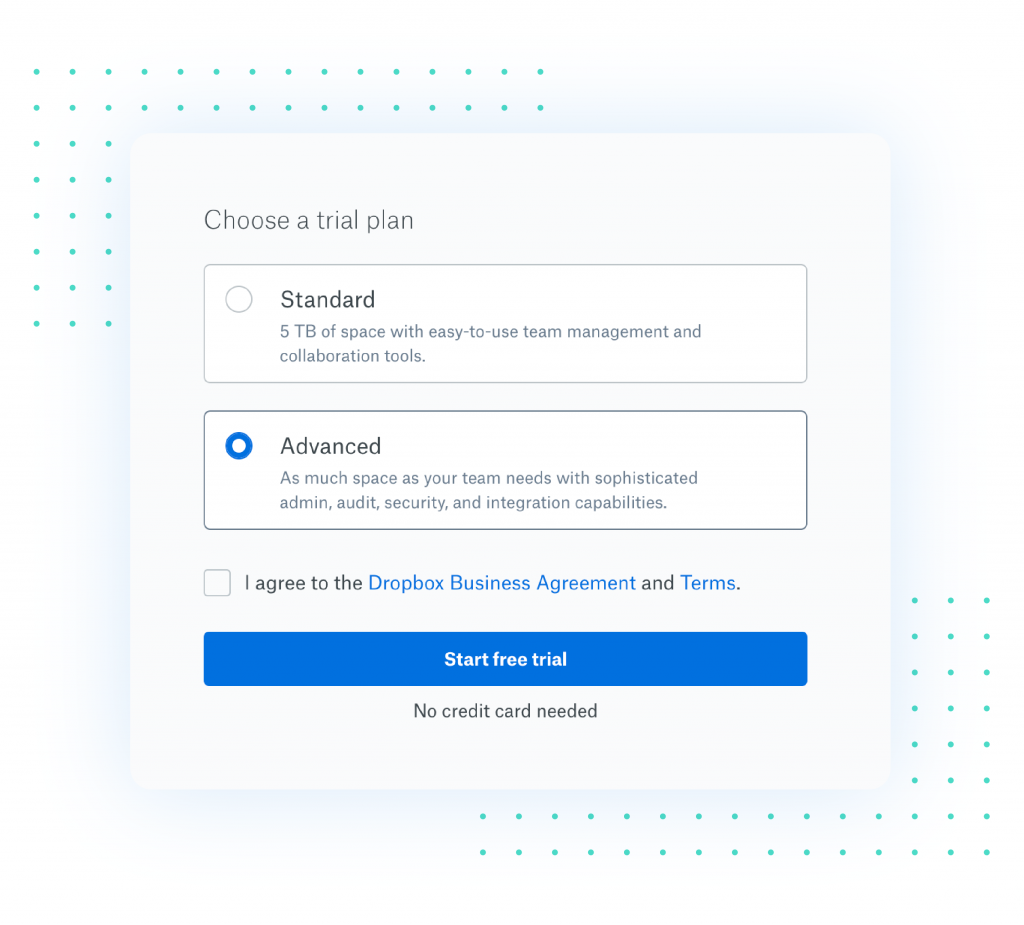
Not only does Dropbox offer their free trial for a full 30 days, by offering customers the chance to explore its “Advanced” plan, but they’re also more likely to wow them with features. Once the trial is up, Dropbox follows up automatically and offers to shift the potential customer onto their chosen subscription plan quickly and easily.
See how easy that was?
4. Measure Everything
Finally, make sure you measure what impact your pricing is having on your subscription sign-ups and churns.
Instead of tracking every single metric, it’s most important you keep an eye on your customer growth and churn rate. These two metrics will give you an overall picture of how many customers you’re attracting with subscriptions, and how many are opting out of the service altogether.
If you’ve got a subscription management platform, these metrics will be easy to track as well as keeping an eye on other areas like how customers want to pay for your service. For example, some customers might prefer to pay for their subscriptions using a certain currency or payment method like GiroPay. If you don’t offer these services and meet your customer’s needs, it’s more likely they’ll churn. A subscription management platform will have all these features built-in, and you stop churn by letting your customer pay and manage their subscription however they like.
How to Calculate Your Subscription Revenue
1. Annual Recurring Revenue (ARR)
The most common way to calculate your subscription revenue is to work out a customer’s Annual Recurring Revenue (ARR).
This calculation will work for customers who have a contract tied to their subscription, so you know that they’re going to stick around for at least 12 months. You can calculate a customer’s ARR by taking the total value of their contract and dividing it by the length of the annual term.
Here’s an example. If you’ve got a customer on a two-year subscription contract that’s worth $5000, each year is worth $2500, right? $5000/2 = $2500 ARR. Simple.
If you’ve got 1000 customers who are paying $50 each a month for your services, however, it’s a little harder. You will have to take the $50 and multiply it by 1000 to get you to $50,000. To calculate the ARR, you will then take the $50,000 and multiply it by 12 months to conclude that your ARR is $600,000.
While ARR is a useful metric, it’s typically only used for fixed subscriptions or recurring fees and is less useful for calculating revenue if customers are switching between pricing tiers.
Pro Tip: Want to learn more about ARR? Check out our helpful blog post here!
2. Monthly Recurring Revenue (MRR)
Next, Monthly Recurring Revenue (MRR) calculates how much your customers are paying in revenue each month.
Once again, the formula is dead simple: MRR = # of customers * average billed amount. If you’ve signed up 80 customers in a month and they’re each paying $100/month for their subscriptions, their MRR value is $8,000. Yet, unless you’re offering a single plan, the calculation won’t be this simple. You will need to take into account your different SaaS pricing plans, which might look like this:
- Subscription plan 1: Customers who have paid for an annual plan to save money, worth $2000
- Subscription plan 2: Customers who have opted to pay for the more expensive monthly plan at $250
If 20 of your customers are on plan 1, it means the remaining 60 are on the monthly plan. At the end of the first month, you’ll have $240,000 in revenue (60 customers x $500/month) + (20 customers x $2500/year). It’s important to recognize that those annual subscription plan holders won’t be adding any more revenue for another 12 months, so make sure not to skew your projections.
Pro Tip: Still want to keep learning? Here’s another piece we’ve put together on MRR.
3. Customer Lifetime Value (CLV)
No matter what pricing tier your customers have subscribed to, it’s crucial to calculate how much they’ll be worth to your business over their lifetime.
This metric, Customer Lifetime Value (CLV) estimates how much money your customers, on average, will spend on your products during their lifetime with your company. Let’s say that a customer stays with you for 5 years before ending their contract, and each year they spend $500. Then, their CLV is $2500.
Calculating your CLV is simple. Take the annual revenue per customer, multiply it with the customer relationship in years, and then deduct acquisition costs.
4. Upsells & Cross-Sells
Finally, keep an eye on customers who are upgrading and switching their subscription packages.
Unlike one-off purchases, bringing in new customers isn’t the only way to boost revenue if you’re also using a subscription business model. Using subscription upsells and cross-sells, companies can generate more expansion revenue by building on a customer’s initial contract.
Here are some numbers. ForEntreprenurs conducted a survey in 2016 that found creating revenue through existing customers costs just 1/5th of what it does to bring a new customer into a business.
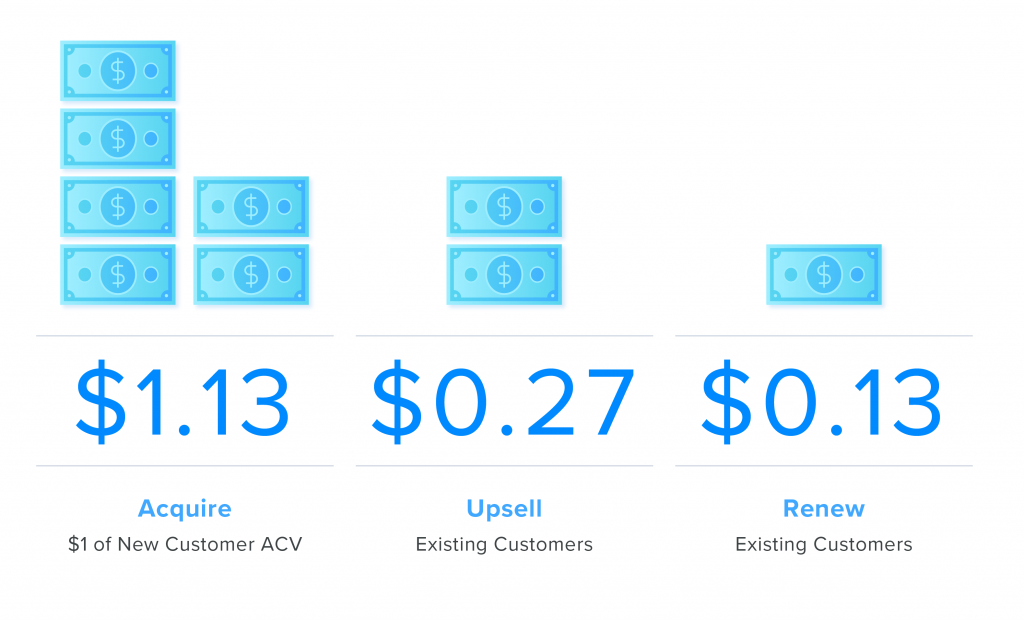
That’s because subscription companies can use existing customers to:
- Upsell subscription plans and offer customers upgrades based on their usage and scaling needs
- Cross-sell products and features associated with their subscription plan they can use to have a positive impact on their bottom line
ForEntrepreneurs David Skok points to HubSpot as a SaaS company that tracks upsell opportunities using a Customer Happiness Index (CHI). The three-part satisfaction survey gives current customers the option of picking a sad, neutral, or happy face. Then, each section is followed by an open-ended question so HubSpot can learn more.

Using this survey, HubSpot identifies the parts of its application that customers liked most, and then they experimented with different sales and onboarding processes to upsell and cross-sell these features. HubSpot’s Brad Coffey says pricing their product right had a huge impact on the unit economics.
“Not simply by getting the average MRR right, or by providing upsell opportunities – but also by signaling what pieces of the product are most valuable,” he explained.
“At HubSpot we changed our pricing in 2011 to be tiered based on the number of contacts in the system – and actually saw an increase in adoption of the contacts application after we made the change.
“After the pricing change, sales reps now could make a lot more money by selling the contacts. And they quickly become much better at positioning that part of the product, as well as finding companies with a contacts-based use case.”
Make Sure the Move to a Subscription Revenue Model is a Success
The move to a subscription revenue model isn’t easy—but it’s worth it.
The first step to making a successful transition is proper planning. Understanding what subscriptions are all about, getting your pricing right, and figuring out what your customers want in your product are all crucial to making the switch in business models a success.
But at the end of the day, the transition will only truly work if you’re able to build a solid relationship with your customers. Unlike one-time transactions, it’s up to you to show your customers that your product will continue to provide value over time.
Only then can your subscription revenue become a success.
Ready to get started? Take FastSpring for a test drive today when you sign up for a free account.
Take this comprehensive guide on-the-go. Download your free copy of The Comprehensive Guide to Subscription Revenue, here!




